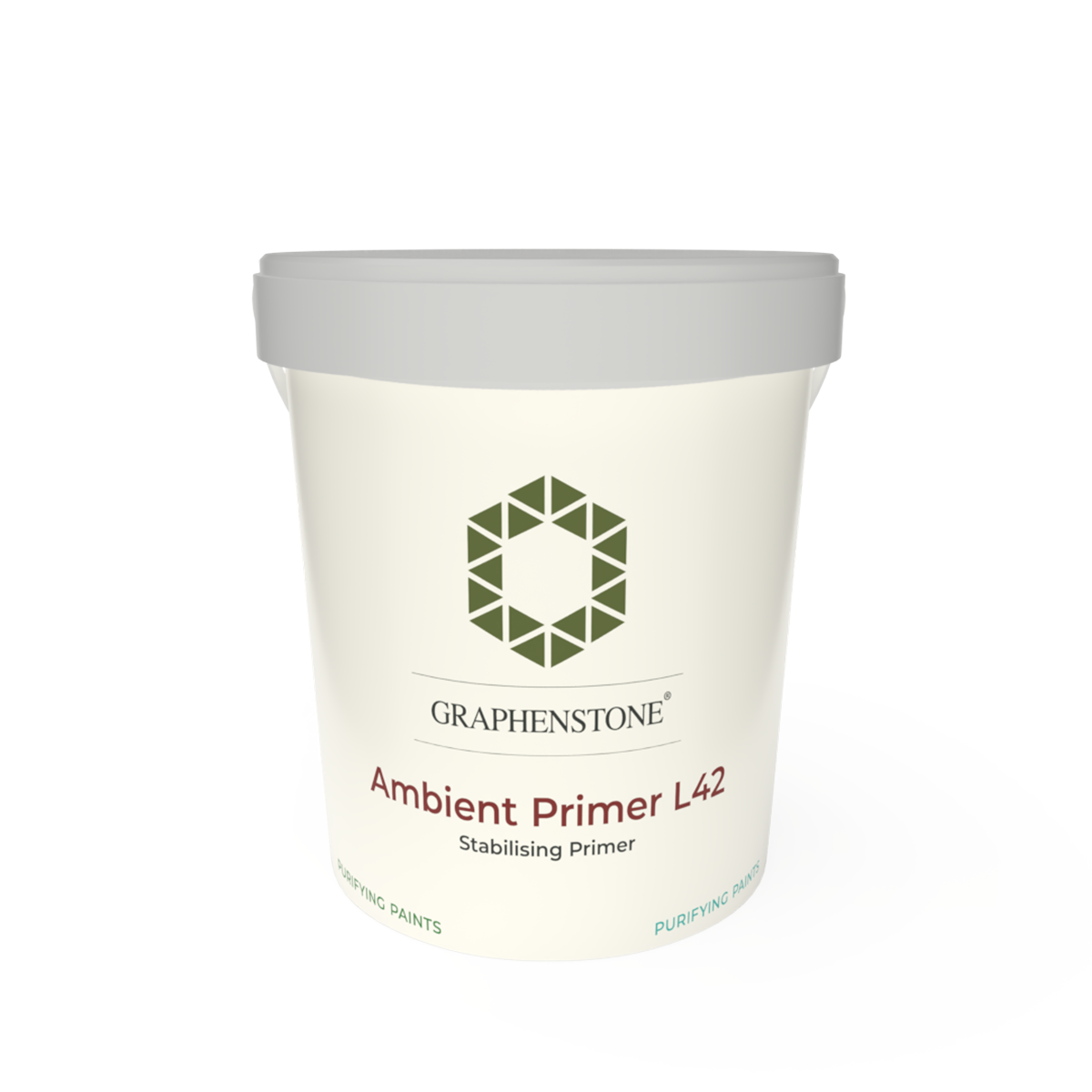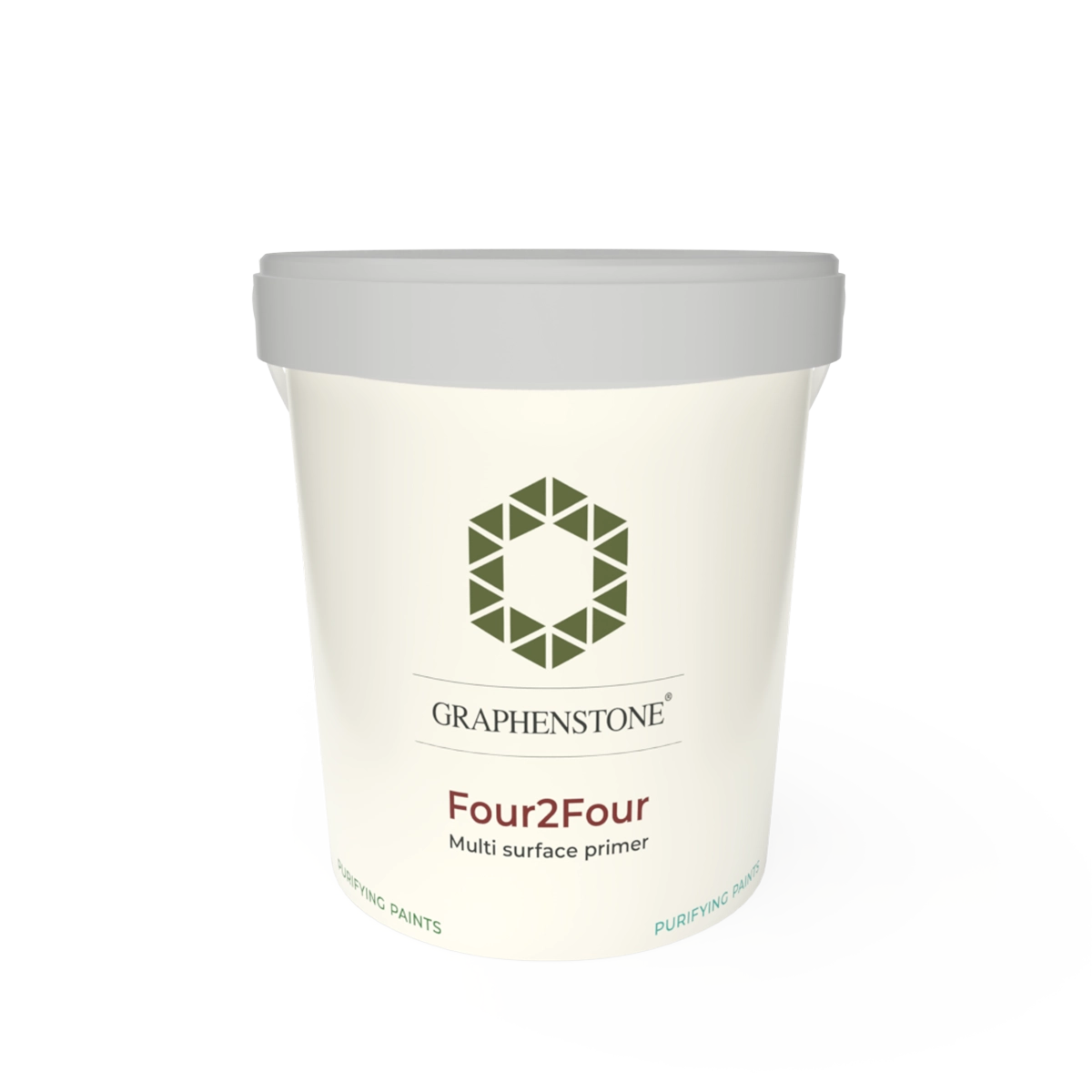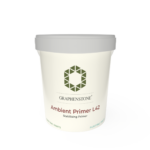Why Use Primer Paints?
Primer paints are regarded by many as the most important coat you can apply in decorating. That’s because paint primer has three vital roles to play:
- Helping your topcoat stick to the surface
- Covering-up and smoothing-out any blemishes and irregularities
- Giving you a base on which to apply your topcoat colour so it looks richer and brighter.
Many surfaces require the use of primer paints ahead of applying the topcoat of paint to ensure a better quality, longer-lasting, more adhesive finish. Bare wood and masonry are a couple of examples of surfaces that benefit from a ‘primer on first’ policy.
Primers help the paint take more firmly to the surface that requires painting. They also give the paint added durability, especially important in busy areas inside homes and other spaces, and in areas that are exposed to the elements outside.
Using a primer will also save you having to apply several topcoats to achieve the best-looking finish, saving you money on paint and time on applying. Primer paint will seal the original surface, so that whatever you paint over it does not sink or seep into the surface below. Primers also help form a seal against moisture and mould stains.
There are times when primer is not required. For instance, if you’re painting over a surface that already has a coat of paint on it, you won’t need primer, unless there are any bare or damaged areas.
The Big Problem With Traditional Primer Paint
Dangers lie within tins of traditional primer paints. Historically, and still to this day, many are made with Volatile Organic Compounds (VOCs) which are dangerous to the health of the people who use them, the wellbeing of the people who live or work in the rooms where the primer has been applied, and damaging to the environment.
You only need to prise off the lid and experience the sometimes eye-watering fumes that the paint gives off to realise that the toxins that are released into the air by these primer paints aren’t good.
Essentially, there are two types of primer paint that are used today:
Oil-Based Primer Paints
These are used for surfaces that can expect regular contact from people. Areas such as cupboards, window ledges and doors fall into this category. The nature of these oil-based primers means thinners need to be used before application and during clean-up (and the thinners themselves contain dangerous substances too).
Water-Based Primer Paints
Also known as latex primers, these are used for covering stains, as they are flexible and show resistance to cracking. Although some water-based primers are available with low or no VOC, many are not. So using almost every traditional type of primer paint carries a health or environmental risk, as VOCs have been proven to cause a variety of nasty medical conditions, including asthma and cancer.
If you want to be sure that you’re dipping your paint brush into primer paint that’s safe and has the power to do good to the environment rather than damage it, you need to choose a product from the Graphenstone range of primer paints.
The Benefits Of Safe And Eco-Friendly Graphenstone Primer Paints
Using primer paints no longer has to put your health or the environment in danger. Graphenstone has created a range of premium primers that are formed from natural ingredients (including lime), so instead of damaging areas in which they are used, they actually benefit them by drawing harmful CO2 out of the air, in the same ways trees do.
The primers contain graphene, a remarkable material that scientists have dubbed the strongest known to man. Using it in paint has created a paint range that’s tough enough to earn Class 1 Strength status, something no primer has ever managed before. Here are some of the benefits Graphenstone primer paint can bring to your restoration, construction or decoration project:
Flexibility
Graphenstone primer paints are naturally flexible and elastic, so are ideal for use on surfaces that are exposed to the rigours of the elements, be that extremes of cold or heat. Also, the flexibility prevents cracking and flaking that can affect some other primers.
Breathability
Because of the lime content in Graphenstone primer paints, there is natural breathability to the primer, and any breathability of the surface it is applied to is maintained. Moisture is able to escape through its porous material. That means the primer will not bubble or peel over time, something that can happen to traditional primers.
Non-Toxic And Odourless
With many traditional primer paints, especially those that require thinning, opening the paint tin is like unleashing a cocktail of toxins into the environment. The overpowering smell of the paint gives a hint to the dangers that lie within the primer. Graphenstone, on the other hand, is odour-free and non-toxic.
Eco-Friendly
When you open a tin of Graphenstone primer paint, you are releasing a paint with the power to absorb damaging CO2 from the local surroundings. Three tins of the paint has the same carbon dioxide absorbing powers as a 250kg tree in a year. You won’t find other primers anywhere on the shelves in the DIY stores that are able to do that.
Anti-Mould, Anti-Fungal, Anti-Bacterial
As the first line of defence between the surface you’re painting on and your chosen topcoat, Graphenstone primer paint has an important role to play in ensuring the quality of your finished paint project.
Thanks to its lime content and pH level of 12, once applied, the primer will naturally not allow the growth of mould, bacteria or fungus on its surface. It also has the power to cover-up existing mould and other stains, giving your topcoat a smooth and consistent surface on which to be applied.
GRAPHENSTONE PRIMER PAINTS
There are various primers in the Graphenstone range that give you a choice of textured and coloured finishes. They can be applied to various surfaces, both indoors and outside with a smoothing effect that can boost the overall appearance and durability of the topcoat.
AMBIENT PRIMER L42 / 44
If the surface you need to paint is showing signs of being very absorbent, choose Graphenstone Ambient Primer to reduce the absorbing power of the substrate, allowing the primer to give you a stable surface on which to apply your topcoat.
This colourless paint primer is recommended for use in cellars and other rooms with little or no ventilation in which the growth of micro-organisms is likely and unwanted.
The primer is available without an anti-algae effect (L42) or with anti-algae properties (L44). The latter is ideal for very humid areas. It’s primer that’s recommended for use before the application of Ambient Pro+ Premium Graphenstone paint.
As with most primers, at least 24 hours should be allowed for drying before applying the topcoat. Over time, the primer paint can guarantee the durability and stability of the photocatalytic system. It won’t alter the breathability of the surfaces to which it’s applied.
GCS PREMIUM PRIMER INTERIOR & EXTERIOR
If you are seeking an even and consistent colour for your interior or exterior surfaces, applying this primer first will help you achieve that goal.
GCS Premium Primer is a mineral-based primer with graphene that’s ideal for preparing dark surfaces to be painted a lighter colour, and for repairing damaged or stained surfaces to allow for a smooth and consistent topcoat colour. It is available for Interior and Exterior surfaces.
Featuring high quality lime and graphene fibre, the primer actively absorbs CO2 and is free of formaldehyde and has trace VOCs only (under 0.1%), all trademark traits of all Graphenstone paints. It’s also breathable, avoids condensation and possesses the high
adherence, flexibility and durability expected of quality primers. The primer needs to be stirred and diluted with water before application.
FOUR2FOUR
Improve the adhesion of your topcoat to a variety of surfaces with this eco-friendly primer paint featuring lime and graphene. Very quick to dry compared to many primers (30-60 minutes is all that’s required). Four2Four contains all the benefits you’d expect from a Graphenstone paint – trace VOCs only (under 0.1%), no formaldehyde, and the capacity to absorb CO2 from environments in which it’s used.
Use Four2Four For:
- A durable, quick-dry undercoat
- Can be used on all kinds of surfaces, including wood, melamine and MDF
- Its lime and graphene content ensures you get a breathable and strong first coat that can cover up stains and imperfections ready for your topcoat
FILLER 10
Designed to prepare surfaces for the application of Graphenstone lime-based paint, Filler F10 Premium is the natural, ecological primer with the power of graphen technology running through it.
Apply it to regulate the texture of the surface you are planning to paint. It can cover micro-cracks up to 1mm wide and bring consistency to damaged or scraped previously-painted surfaces.
Designed to be used on interiors as well as exteriors, the primer paint possesses Graphenstone’s trademark breathability, is formaldehyde emissions free, has trace VOCs only (under 0.1%), and shows anti-condensation properties as well as resilience against cracking and peeling. Using the primer will save on material and labour costs, as less topcoat will be required in order to achieve a smart appearance.
Uses Of Primer Paint
Primer paints come in different forms to suit different surfaces, so it’s important you choose the right one to get the best result. The colour is usually white as it’s a neutral colour that’s ideal for painting over with any other colour, although you can get paint primer in a broad colour selection, handy if your new paint is several shades away from the one you intend to paint over.
Paint & Primer All-In-One
Sounds like a dream solution, right? Why spend the time applying primer and paint separately, when you can do it in one go? But the reality is that the all-in-one solutions don’t give you the same quality results as separate applications. Not yet, anyway.
Multi-Purpose Primer Paints
These are gaining in popularity because of their versatility. But there is still a role to play for primers that serve a specific purpose, such as those listed below:
Bonding Primer Paint
There are some surfaces, such as ceramic, plastic or vinyl that simply don’t take well to being painted. These will require special bonding primer paint to prepare them for painting, so that your chosen paint can adhere to the surface.
Masonry Primer Paint
Primer paint is a good idea for masonry as the high pH level of many surfaces make it difficult for paint to adhere to the surface when applied directly. So choose a masonry primer paint to get the best possible finish. Primer can also help prevent little crystalline deposits called efflorescence from forming on the surface.
MDF Primer Paint
If you’re planning a colour change for your kitchen cabinets, it’s essential to apply primer first, especially if your new shade is significantly different from the old one. Primer will ensure you get smooth coverage with none of the previous colour showing through.
Stain-Covering Primer Paints
Walls and other surfaces can easily be on the receiving end of all kinds of stains that scrubbing alone won’t remove. Water and tobacco smoke can stain walls. So too grease, or children’s pens and crayons. Primer paint can negate all of these blemishes so you can apply the topcoat, confident of a consistent finish.
Drywall Primer Paint
Dry areas of wall in new-builds or elsewhere will soak-up any paint you apply, risking giving you better coverage in some places than others, resulting in an uneven finish. To avoid this, it’s best to first apply primer as this will give you an even surface to which your paint can grip, and will require you to use less paint to get the finish you want.
Wood Paint Primer
This is usually used on woods that are exposed to the weather elements, so window ledges, door frames, sheds, wooden garden furniture, fences, etc. to help protect them from weather damage. If you’ve ever tried to directly paint onto bare wood, you’ll know how difficult it can be to get a good finish. Using wood primer will give you the best quality finish.
Metal Primer Paint
Your primer should contain ingredients that prevent the metal from rusting and will give your topcoat more strength and a longer lifespan than if you apply your paint direct to the metal.
Preparing Surfaces For Graphenstone Primer Paint
Whichever surface you’re planning to apply Graphenstone primer to, you need to ensure the surface is smooth and free from any loose particles, peels or other imperfections.
Applying And Drying Primer Paint
The primer paint should be applied evenly in small sections, starting with borders. Do not paint over areas that are drying and avoid overlapping. Applying too much product to a single area can cause micro-cracking. It’s vital you give your Graphenstone primer paint plenty of time to dry to ensure your topcoat sufficiently adheres.
Primer Paint Storage
Be sure to leave any unused primer paint in its original tin, and store in a cool, dry place away from direct sunlight, and in an environment that won’t get too hot or too cold. Following this storage advice will ensure your Graphenstone primer paint stays in tip-top condition for at least 12 months after the date of manufacture.
The Graphenstone Quality Guarantee
- Class 1 Strength Paint
- Contains Lime and Graphene
- Automatically absorbs damaging CO2 from the atmosphere
- Gold level Cradle to Cradle certification
- Global Green Tag Certified
- Recognised on the Sensitive Choice programme
A Full Range Of Eco-Friendly Paints
Graphenstone doesn’t just supply lime and graphene-rich primers. We offer a full range of paints that are ideal for topcoats too, in a wide range of colours.
All our paints possess the CO2 absorbing powers that replicate the effects of trees, drawing out harmful toxins from the environment, leaving purer air that leads to fewer allergies and a better quality of life.
If our planet is to have a future, the future of primers and other paints has to have trace VOCs only (under 0.1%) and formaldehyde-free. Exactly the benefits offered by the Graphenstone range today.





